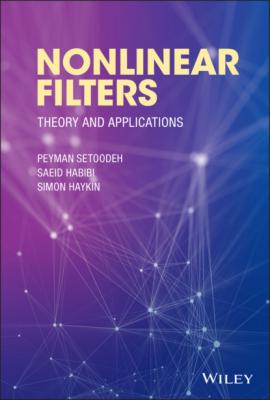Nonlinear Filters. Simon Haykin
Чтение книги онлайн.
Читать онлайн книгу Nonlinear Filters - Simon Haykin страница 28
 v Subscript k Superscript e q"/>, can be found as [37, 38]:
v Subscript k Superscript e q"/>, can be found as [37, 38]:
Applying the equivalent control,
(3.31)
which converges to zero by properly choosing the eigenvalues of
In (3.30),
Now, the equivalent observer auxiliary input can be calculated as:
(3.33)
where
(3.34)
3.5 Unknown‐Input Observer
The unknown‐input observer (UIO) aims at estimating the state of uncertain systems in the presence of unknown inputs or uncertain disturbances and faults. The UIO is very useful in diagnosing system faults and detecting cyber‐attacks [35, 39]. Let us consider the following discrete‐time linear system:
where